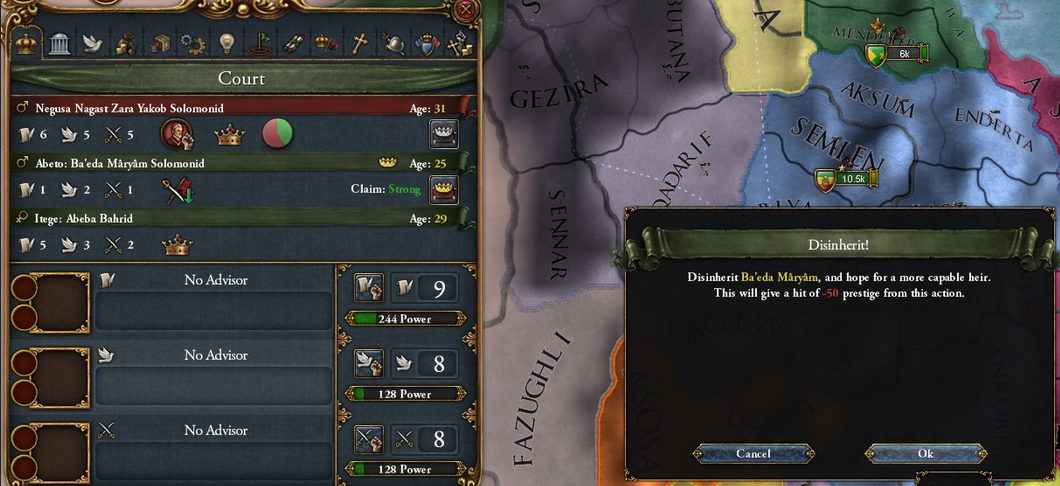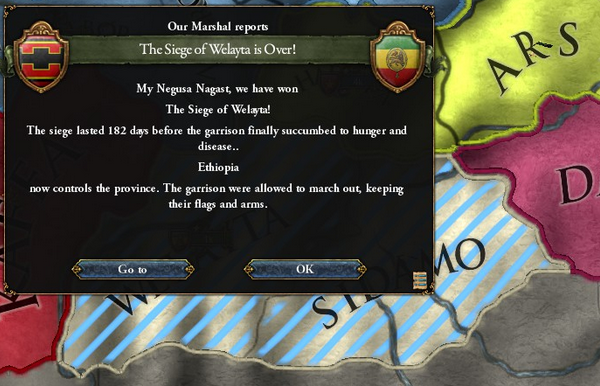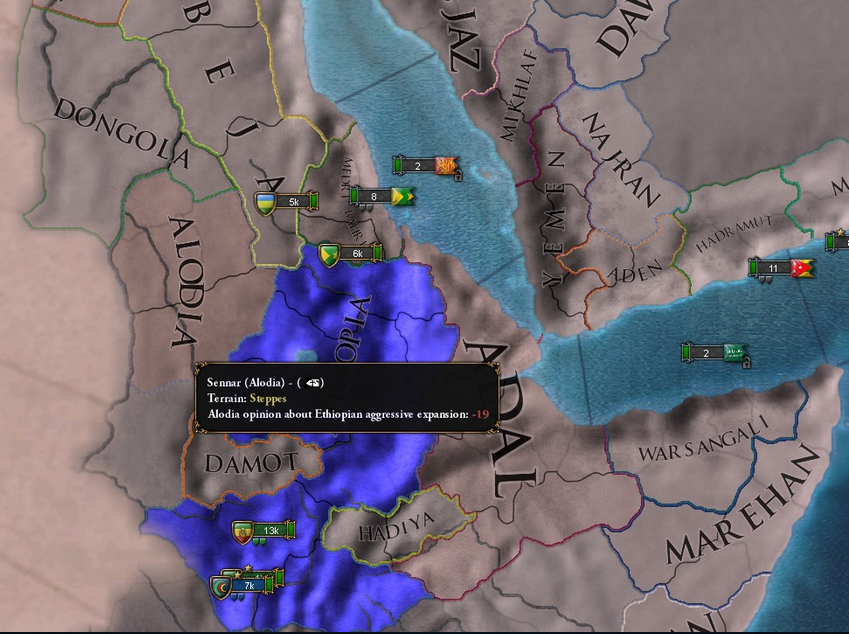Zara Yakob made preparations to conquer the smaller kingdoms to the south.
He claimed the entire Horn of Africa as rightful Ethiopian land.
But he worried about his successor. His son was not bright at all. He saw him as a disgrace and therefore decided to disinherit him, so that his empire could continue long after his death.

He took a new wife, who had converted to the Coptic faith before the marriage.

Not much later a more capable heir was born

The church provided the education for the upper class and spread the true faith to the common folk. But to continue to do so, they demanded more autonomy.

When the succession was secured, Zara Yakob assembled his armies and marched south.
The small kingdoms were no match for the overwhelming forces of Ethiopia and one by one they fell.




Ethiopia would receive a blessing from God after the success of the southern campaign.
This was a clear sign that this was the righteous way.

Most of the neighbouring countries did not really care about the Ethiopian expansion

Zara Yakob had sent out his diplomats to strengthen the relationships with the northern Coptic nations, because he had no interest in fighting them.

The true enemy is in the west. The Muslim kingdom of Adal has been a rival of Ethiopia for some time now. Tension is growing and a clash between them is inevitable.
He claimed the entire Horn of Africa as rightful Ethiopian land.
But he worried about his successor. His son was not bright at all. He saw him as a disgrace and therefore decided to disinherit him, so that his empire could continue long after his death.
He took a new wife, who had converted to the Coptic faith before the marriage.
Not much later a more capable heir was born
The church provided the education for the upper class and spread the true faith to the common folk. But to continue to do so, they demanded more autonomy.
When the succession was secured, Zara Yakob assembled his armies and marched south.
The small kingdoms were no match for the overwhelming forces of Ethiopia and one by one they fell.
Ethiopia would receive a blessing from God after the success of the southern campaign.
This was a clear sign that this was the righteous way.
Most of the neighbouring countries did not really care about the Ethiopian expansion
Zara Yakob had sent out his diplomats to strengthen the relationships with the northern Coptic nations, because he had no interest in fighting them.
The true enemy is in the west. The Muslim kingdom of Adal has been a rival of Ethiopia for some time now. Tension is growing and a clash between them is inevitable.

